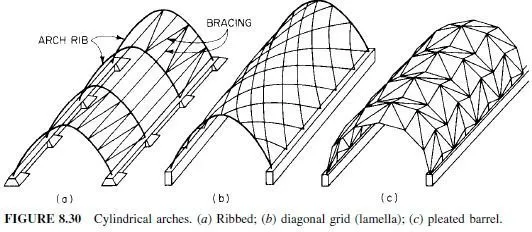Structural members are usually classified according to the principal stresses induced by loads that the members are intended to support. Axial-force members (ties or struts) are those subjected to only tension or compression. A column is a member that may buckle under compressive loads due to its slenderness. Torsion members, or shafts, are those subjected to twisting moment, or torque. A beam supports loads that produce bending moments. A beam-column is a member in which both bending moment and compression are present.
In practice, it may not be possible to erect truly axially loaded members. Even if it were possible to apply the load at the centroid of a section, slight irregularities of the member may introduce some bending. For analysis purposes, however, these bending moments may often be ignored, and the member may be idealized as axially loaded.
There are three types of ideal supports (Fig. 3.19). In most practical situations, the support conditions of structures may be described by one of these three. Figure 3.19a represents a support at which horizontal movement and rotation are unrestricted, but vertical movement is restrained. This type of support is usually shown by rollers. Figure 3.19b represents a hinged, or pinned support, at which vertical and horizontal movements are prevented, while only rotation is permitted. Figure 3.19c indicates a fixed support, at which no translation or rotation is possible.





hello, i am a civil engineering student. i would like to know about designing an inclined slab, how to design the ridge support.. if say there is an inclination of 45 degree.. the span is 2.5m. how to calculate the load on the inclined beam.. and details at the ridge. thanks in advance.